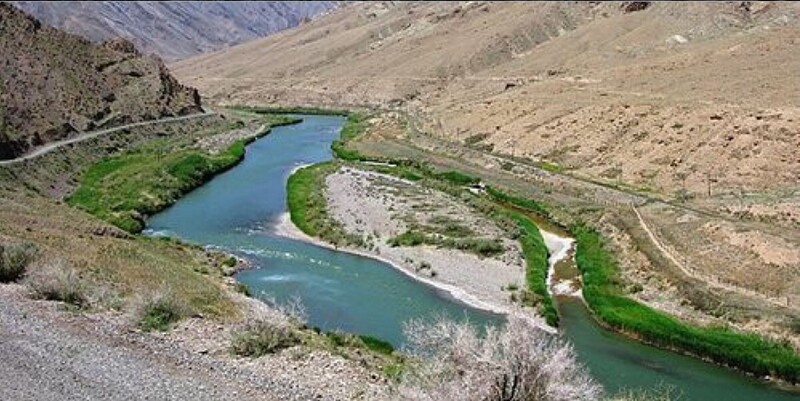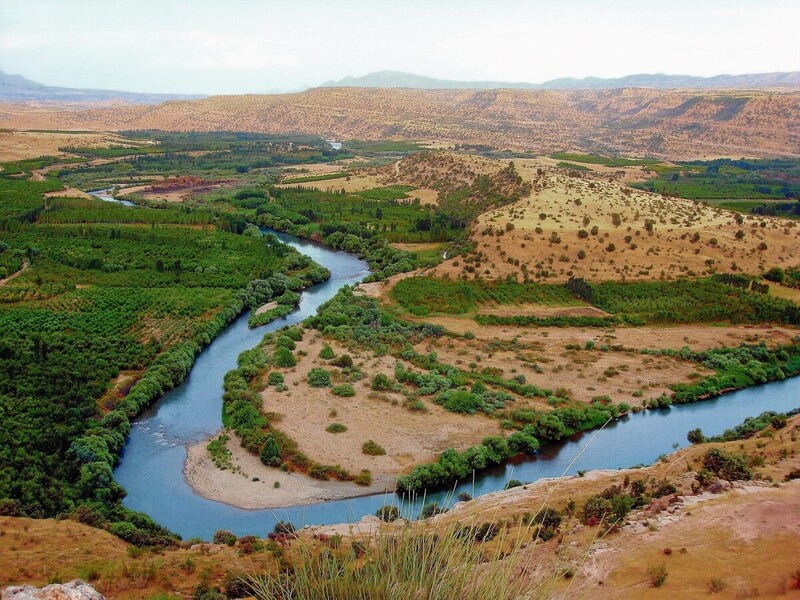Kurdistan is a rich country in terms of water resources due to its mountainous areas, snow, and rainfall, so it is considered to be a major water source for other West Asian countries. Kurdistan's water resources are estimated at billions of cubic meters annually, which causes the formation of many springs, wells, and rivers that originate in Kurdistan and flow into neighboring countries.

The most important rivers in Kurdistan are:
The Aras River
This river originates in the Bingol region of North part of Kurdistan and flows towards the Erzurum region. From there it goes to the border between Kurdistan and Armenia; then it flows along the border between Nakhchivan, Armenia, and the Republic of Azerbaijan with Iran and finally flows into the Caspian Sea. The Aras River is 920 kilometers long, of which 434 kilometers of it flow through Kurdistan. Its maximum width is 8 meters and its depth is between 35 and 40 meters.

The Tigris River
It is one of the two rivers that flow through Mesopotamia. It originates from north of Diyarbakir in North part of Kurdistan. It enters South Kurdistan from the north of Pishkhapoor village. The Tigris River is 1900 kilometers long, more than 600 kilometers through North part of Kurdistan and 120 kilometers through South part of Kurdistan, back to Baghdad, and then to the Gulf. Before flowing into the Gulf, it joins the Euphrates and Karoon rivers in Iran.

The Great River
This river originates from the Jolemerg region of North part of Kurdistan and flows into Erbil province in South part of Kurdistan. It flows northwest of Erbil and eventually joins the Tigris River. It is 451 kilometers long.

The Euphrates River
It consists of two main branches:
Karasu; it originates from north of Erzurum and is 460 kilometers long.
Murad; it originates between Lakes Van and Ararat and is 610 kilometers long.
These two branches join in northwestern Alazig to form the Euphrates. The Euphrates River flows from the border of North part of Kurdistan into West part of Kurdistan and Syria and from there into Iraq. In southern Iraq, near Basra, they merge with the Tigris River to form the Shatt al-Arab. Shatt Al Arab crosses the Iran-Iraq border and joins the Karoon River in Iran, which is called the Arvand river in Iran and eventually flows into the Gulf.

The Ghezel Ozan River
This river, whose name is Turkish and means golden or red stream, originates from the mountains of Chilchama between the cities of Saqez and Divandareh in Sina (Sanandaj) province in East Kurdistan. It is the second-longest river in Iran. Then it passes through the Hawshar and Garusi regions of East Kurdistan and heads to Zanjan province in Iran. In northern Iran's Gilan province, it merges with the Shahrood River to form the Sefidrood River then flows into the Caspian Sea near Rasht. It is 670 kilometers long and has an annual of 500 million cubic meters of water.
The Gawro River
This river is the southern branch of the Sirwan River and originates from the triangle of the Kermanshan (Kermanshah), Sina (Sanandaj), and Hamadan provinces.
Sirwan River
The two main branches of the Zhawaro and Rezaw Sirwans meet to form the Great Sirwan. This merging will take place 14 kilometers north of Paveh. The Sirwan River flows in an irregular direction to the southwest. Then it reaches the border and becomes the dividing line between southern and eastern Kurdistan for 37 kilometers between the villages of Kewta and Lawarani in the Shameran region until it enters the southern territory and flows into the Derbandikhan Lake and from there it extends until it joins the Tigris River.

The Khorasu River of Kermashan
This river, also known as Karasu, flows through the Kermashan plain. Khorasu originates from the Rwansar River, located 50 kilometers northwest of Kermashan in Rwansar. 15 kilometers before reaching Kermashan, it joins the Razawar River and several other branches of this river and then joins the Merg River near the Qizanchi village. Khorasu continues its journey through Kermashan, where the two rivers Kulakaw and Awshorani merge. After leaving Kermashan, it merges with the Gamasiaw River near Firaman. Together, the two rivers form the Seymara River, which flows into the Karkha Dam Lake. This river divides into two branches after the dam. One branch flow into the Hurul-Azim Lake on the Iran-Iraq border, while the other branch flows into the Karoon River, eventually merging with Shatt Al Arab and flowing into the Gulf as the Arvand River. The length of the Khorasu River is 170 kilometers.









